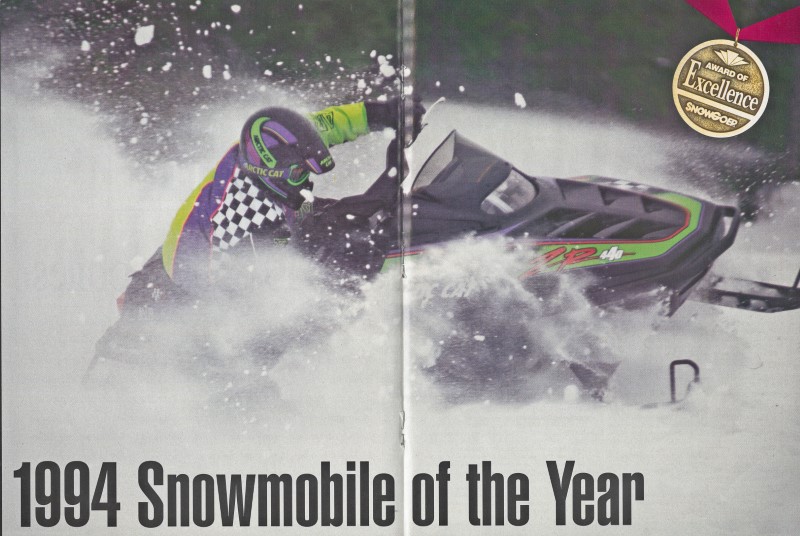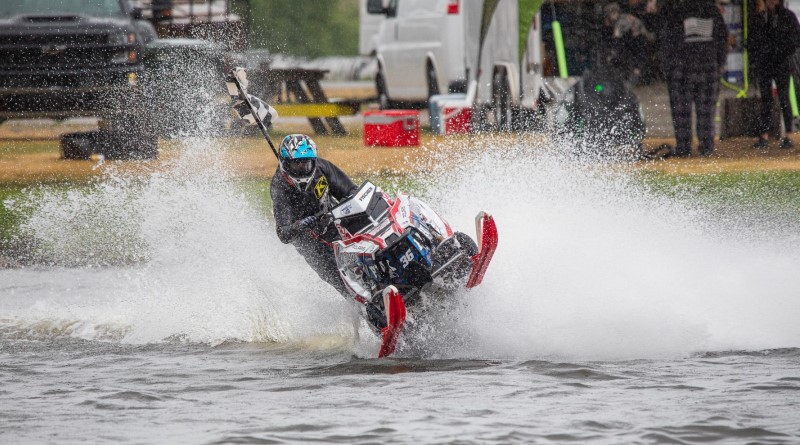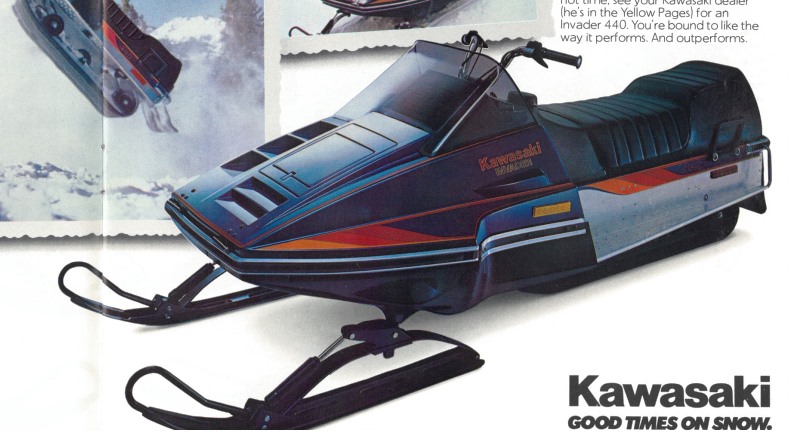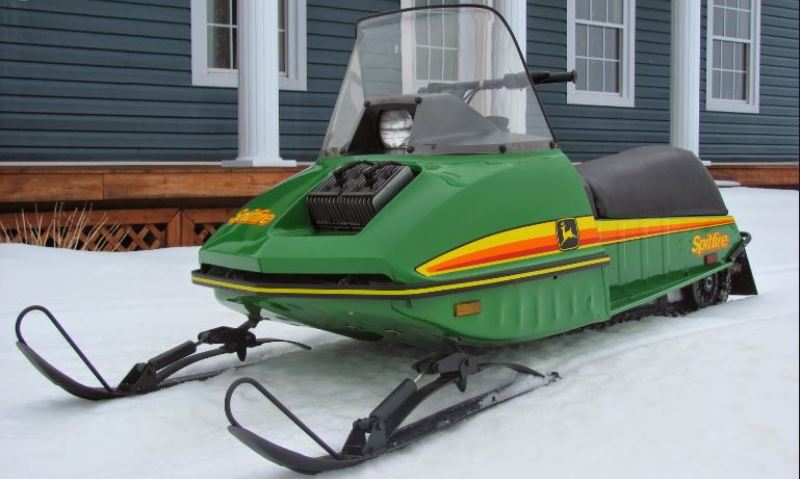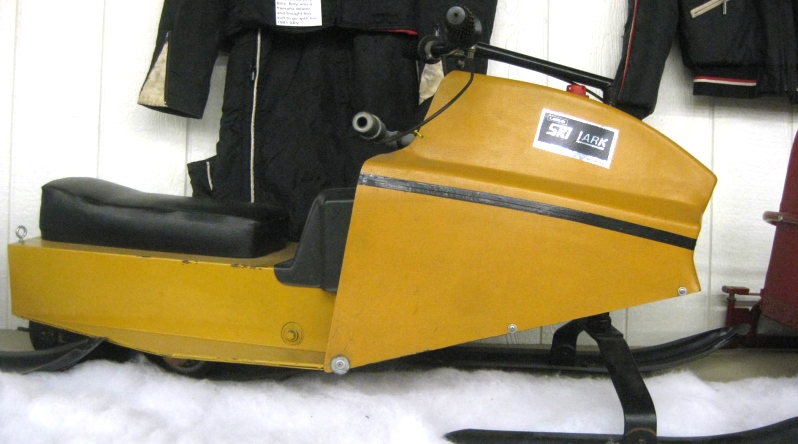The folks at Yamaha were very busy this past summer and perhaps busier than most observers of the snowmobile industry would have guessed.
First, early this year, the proverbial curtain was raised on the Yamaha SS440 in prototype form. The new sled almost immediately conjured thoughts of the SS433 and Yamaha glory days on the oval tracks.
The Yamaha SS440 chassis is all new, sleek and nimble. A lower placed engine adds to stability and a long- travel suspension irons out the bumps. Also new is the instrument panel. Speedometer, tachometer, trip meter and oil indicator are mounted in the handlebars for maximum visibility.
The engine is a new variation, based on the new Excel V powerplant introduced last model year. The xcel V. as Yamaha purists are well aware, boasts a 535cc, reed-valve twin. Bore and stroke measure in at 73mm x 64mm.
Yamaha engineers took that engine and cut the bore back to 66mm, which translates to a cubic centimeter size of 437 for the S5440. (Were not sure what Yamaha would think, but we assume that larger heads and pistons could give an SS440 owner a 535cc powerplant and about eight more horsepower).
The SS440 is rated at 50 horsepower at 7,000 rpm. The Excel V claims 58 horsepower at the same rpm level.
We noted before that Yamaha was busier than usual this past summer — and probably a few summers before that — and what we were alluding to is yet another new sled from the Japan-based manufacturer this model year.
The new SR-V was unveiled in mid-September at Yamaha’s Coon Rapids research and development center. In a word, the SR-V is awesome.
Starting with the powerplant, Yamaha took its new engine introduced one year ago and put it in this year’s new sled — full bore. To nestle around the 53 5cc powerplant, Yamaha gave the SR-V its new SS440 chassis (Wasn’t that what we just talked about — combining the Excel V big-bore engine with the nimble new SS440 chassis).
That combination of chassis and engine would have been impressive just by itself but Yamaha must have worked weekends too over the summer months because the newest and most innovative part of the SR-V is up front in the ski suspension.
An initial glance at the SR-V front suspension may persuade an observer to comment on “Yamaha’s entry into independent front suspension sleds.” That interpretation of just an IFS model seems to bristle Yamaha engineers. They call it a T.S. (telescopic strut) suspension, say it has nothing in common with other manufacturers’ IFS models and beg comparisons to note differences rather than similarities.
On closer inspection, differences with other IFS sleds become apparent. Rather than using a coordinated series of control arms, the SR-V uses a single nitrogen/oil shock absorber as the integral part of the suspension. The oversized shock, borrowed from Yamaha moto-cross bikes, is aligned in a vertical fashion parallel with its sister ski shock on the other side of the sled. Other IFS designs have the ski shock aligned more in a horizontal fashion.
Yamaha engineers claim that the design on the SR-V maintains a consistent ski stance over all terrains, while other IFS models have changing ski stances as they respond to bumps on trails. Yamaha reasons that the T.S.S. is more stable because of this factor.
A knuckle joint assembly adds strength and keeps the shock from over-extending itself. The shock can flex six inches in compression and two inches for rebound. The T.S. suspension is protected from damage by an exterior casing.

Although the SR-V sports the same engine as its luxury brother the Excel V, slight tuning changes reduce the claimed horsepower of the SR-V to 55. With slightly less horsepower, the SR-V will qualify for a number of cross-country races this winter that have horsepower limits.
And across rough trails laced with snowmobile-eating moguls, Yamaha engineers say the SR-V will stay with the hottest white-knuckle sleds in the industry and may even outrun them.
Where there should be enough S5440s to go around, the SR-V will be a limited production sled this model year. Only about 1,000 will be manufactured and the price tag will be in the $3,000 neighborhood. The suggested retail price for the S5440 (before transportation costs, local taxes and dealer costs are added) is $2,449.
Besides both sleds featuring a speedometer and tachometer in the handlebars, they also will boast such Yamaha standards as oil injection lubrication, capacitor discharge ignition, disc brakes and seven gallon gasoline tanks.
Both also will have butterfly carburetors, the SS440 a Keihin 34mm and the SR-V a Keihin 38 mm.
Based on Yamaha’s introduction of two new sleds this model year, some competitors may hope Yamaha takes a summer vacation next year.
MODEL: Yamaha SS440
Suggested Retail Price: $2,449
Engine/Drivetrain
Engine Position; Front
Manufacturer; Yamaha
Displacement; 43 7cc
Cylinders; Twin
Cooling; Axial fan
Horsepower; 50 @ 7.000 RPM
Compression Ratio; 6;1
Bore/Stroke; 66mm x 64mm
Carburetor; Keihin 34mm (butterfly)
Drive Clutch; Yamaha
Vital Statistics
Weight (dry); 374 lbs.
Fuel Capacity; 7 gallons
Length; 103.6 in.
Width; 38.g in.
Height; 38.2 in.
Ski Stance; 34.5 in.
Suspension / Track
Suspension; Slide rail
Ski Suspension Type; Leaf/shock
Track Length; 115 in.
Track Width; 15 in.
Track Material; Rubber with reinforced fiberglass
General Information
Brake Type; Disc
Chassis Material; Aluminum, steel
Ignition Type; CD
Oil Lubrication; Injection
MODEL: Yamaha SR-V
Suggested Retail Price: N/A
Engine/Drivetrain
Engine Position; Front
Manufacturer; Yamaha
Displacement; 535cc
Cylinders; Twin
Cooling; Axial fan
Horsepower; 55 @ 7,000 RPM
Compression Ratio; 6;1
Bore/Stroke; 73mm x 64mm
Carburetor; Keihin 38mm (butterfly)
Drive Clutch; Yamaha
Vital Statistics
Weight (dry); 385 lbs.
Fuel Capacity; 7 gallons
Length; 104 in.
Width; 38.9 in.
Height; 36.8 in.
Ski Stance; 35 in.
Suspension / Track
Suspension; Slide rail
Ski Suspension Type; Independent (telescopic strut)
Track Length; 116 in.
Track Width; 15 in.
Track Material; Rubber with reinforced fiberglass
General Information
Brake Type; Disc
Chassis Material; Aluminum, steel
Ignition Type; CD
Oil Lubrication; Injection

